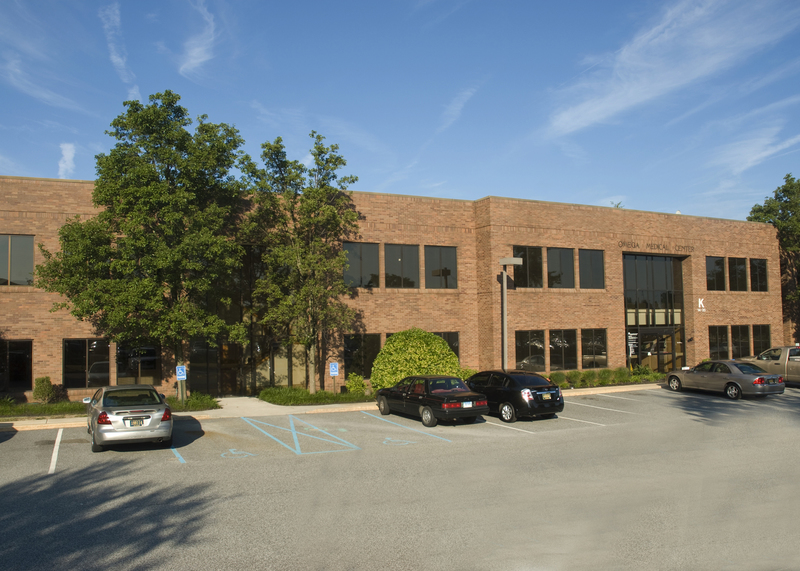Omega Medical leads the way with solar energy and conservation
Omega Medical Center, a leader in occupational and employee health in Delaware and the Mid-Atlantic region for more than 25 years, is leading the way on another front this summer: utilizing cutting-edge alternative energy technology and comprehensive conservation measures to drastically reduce escalating electric costs.
The center, says CEO Deirdre O’Connell, reduced its electric bill by 45 to 50 percent in the month since Omega’s state-of-the-art Flexera solar system went online, in addition to producing revenue-generating Solar Renewable Energy Certificates.
The solar system was the second part of a multilayered approach O’Connell took to reduce energy costs on Omega’s 14,000-square-foot Newark, Delaware facility. Her efforts began by implementing a wide range of conservation measures identified by a comprehensive energy audit conducted by the solar system’s design-build team, Flexera Inc. of Harbeson.
The audit, managed by certified energy auditor Cameron Haughey, BPI, CEM, identified areas of waste and projected savings in a wide range of areas, from lighting and HVAC units to roofing, windows, hot water, data center operations and landscaping.
“Approximately 19 percent of Omega’s energy cost reductions is in conservation measures alone,” said Haughey. “People often don’t realize the simple measures that can make a huge difference in your energy use - but Mrs. O’Connell did.”
Deirdre O’Connell was born in Ireland and later worked in Germany doing market research for the Irish government before coming to America in 1969 and becoming the assistant to the medical director for Alfred I. DuPont Hospital for Children in 1976.
In her frequent visits to Europe, she recognized that many European countries were using alternative energy sources both in housing and business environments, reducing their costs.
She helped found what is now Omega Medical Center in 1985, and in 1998, with several partners, bought out the original owners. For more than 10 years, O’Connell followed developing alternative energy technologies in the United States and abroad before deciding now was the time to move forward.
“The efficiency of solar panels has increased; the costs have come down and there are government incentives that help make it feasible at this time,” said O’Connell. “This system is estimated to pay for itself in four years. At the rate it’s going, I think it may be sooner.”
“Mrs. O’Connell was very determined when it came to making her building efficient,” said John Donato of Flexera. “It was a smart move, too, and she suspected that. She had a very good hunch that efficiency was a big part of the medical center’s energy solution, and Flexera provided her with a pathway to increased efficiency.
Flexera, a certified energy manager, did a complete Type II Energy Audit of Omega Medical Center, including a comprehensive system analysis with recommended solutions, baseline energy index and energy cost index. The firm also created an Energy Star portfolio manager account to monitor and verify existing and future energy conservation measures.
Haughey said one of the major improvements that maximized savings was installing a cool roof, a special white roof coating that covers existing tar roofs and reflects light instead of absorbing it. Cool roofs qualify for additional financial incentives.
On top of the white roof, Flexera custom designed a rooftop 25.48 Kw photovoltaic (solar) energy system around existing heating and cooling units. The system generates approximately 33,000 kWh of clean, renewable solar power to the facility. Donato pointed out that it also eliminates the production of at least 24 metric tons of greenhouse gas emissions that would otherwise enter the Earth’s atmosphere.
The cool roof creates additional efficiency by bouncing sunlight up to the specially designed cylindrical solar tube collectors sitting on top of the roof, so light is collected from every angle. “It multiplies the efficiency of the system,” said Haughey.
Omega Medical Center’s entire lighting system, one of its biggest energy users because of its special lighting requirements for medical testing and procedures, was retrofitted to more efficient bulbs and ballasts. Some of the center’s HVAC units were also replaced. The windows were tinted or had solar blinds installed to lower temperatures in the building during warmer seasons.
Landscaping recommendations included the planting of eastern redbuds that will grow to approximately 30 feet and shade tall, seamless south- and southwest-facing walls of windows during the warmer months, but allow light to pass through to create warmth in the winter when the leaves have shed. Flexera also created and launched an internal energy management plan for reducing internal energy consumption.
“All of these measures,” Donato said, “were researched, designed and implemented using Delaware technicians, American-made products and Delaware labor.”
The results are all that O’Connell hoped for to date, and she is watching and waiting for the right time to expand her solar system. “I’m really happy. I’d like to expand our efforts to cut costs and have an entirely carbon neutral footprint.
“What this has accomplished,” said O’Connell, “is better control of our costs, but there’s more to it.
“Using what is out there, free, the sunlight, gives you a real sense of freedom. There’s a definite attraction to being as self-sufficient as possible. And we’ve accomplished this, by A, reducing our power costs, B, getting a feeling of more control, and C, the value in and of itself - in using a renewable energy, you’re reducing your carbon footprint. That’s very valuable. That’s a wonderful thing!”
























































